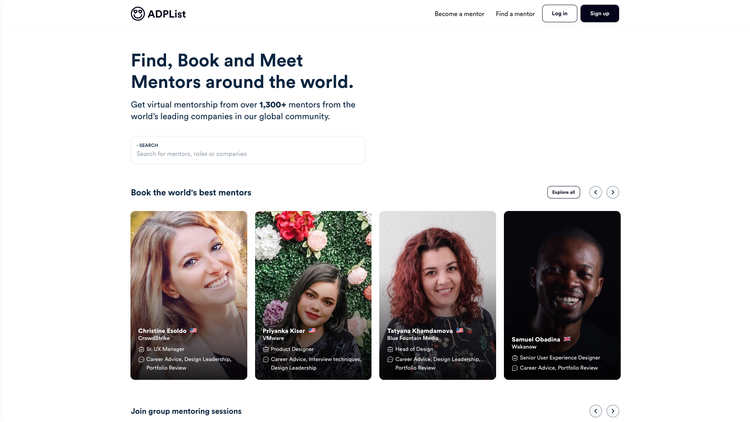How leaders can nurture the next generation of designers
A more holistic approach to design education

Illustration by Tridib Das
You can’t really solve complex, unique problems by approaching them in the same, systematic ways. It’s the human connection that helps to deliver on business outcomes, and we’re learning that we must be inclusive and collaborative to uncover new designers that bring a fresh perspective, a different outlook, and a new energy. This will help the entire industry develop and accelerate in the coming years.
A call to action for design leaders to step up and educate
The tools we use always change, and the best design skills and problem-solving methods, such as empathy and how to collaborate, are almost never taught in the classroom. We learn them on the job and from other people on our teams. Design leaders therefore need to identify the strengths and weaknesses of their team members and understand where emerging designers are lacking in knowledge, and where they have the opportunity to grow.
Mentorships play an important part in helping designers find these opportunities, even if they can’t do it at their current workplace. It’s why I’m involved in both Adobe’s Design Circle and its accompanying scholarship, and the Amazing Design People List (ADPList), a global design community, created during the pandemic, that connects up-and-coming designers with mentors to provide career advice, portfolio reviews, tips on design leadership, and more.

We must also encourage, nurture, and create an inclusive space for all people to learn and practice. It’s particularly crucial to foster designers from traditionally underrepresented communities to bring new perspectives to the industry. At my organization, Rocket Mortgage, for example, I’m setting up an apprenticeship with a focus on diversity, equity, and inclusion. There are already many other amazing initiatives out there, like Design for Diversity by Project Inkblot (a practical framework that aims to help people create more equitable products and services) and Antionette Carroll’s Creative Reaction Lab, which educates, trains, and challenges Black and Latinx youth to become leaders in designing racial and health equity.
Emerging designers don’t necessarily need a formal education. If they show the ability to solve problems, and a passion for the industry, we must take them under our wings and teach them. At Rocket Mortgage, we have a focus on building up talent internally. Our internships help emerging designers grow in the field, while also leveling up the team at the same time. We offer UX training by the Nielsen Norman Group and run workshops like Presenting with Confidence by Mike Monteiro and Articulating Design Decisions by Tom Greever. I want to build a destination workplace, using the analogy of a teaching hospital, where emerging designers come, learn their craft, and get good at it.
Helping designers become successful in the next phase of their career is immensely rewarding. Guiding someone through a problem because you’ve had a similar experience is powerful. It also makes you a better designer and design leader. Explaining something to other people and responding to their questions and feedback helps you grow in your own right.
The benefits of being a specialized generalist
Whether you need to be a specialist or a generalist really depends on the company you (want to) work for. Personally, I’m a strong believer in T-shaped designers who excel in one discipline but also have general knowledge and the ability to collaborate across disciplines with experts in other areas. Becoming a specialist in a part of design that is significant to you helps you identify a problem in your field and the approach to solving it, but you can’t be great at everything. I encourage people to try to improve their weaknesses, but also play to their strengths and adapt to their environments.
The key is having a continuous learning mindset. The industry is constantly evolving, and so are we. We never stop learning, and it’s okay to make mistakes. The design process is not hugely different from the scientific process: We create hypotheses, experiment, and test. We want to be proven wrong and understand “why.” It’s not about being right, it’s about learning.
Every month my team identifies their biggest successes and failures. We recognize and award prizes to both because we want to reward their courage to show their vulnerability. What makes you a better designer is making a series of mistakes and learning from them. When we take the time to really test and learn, we’re able to iterate on our products in more meaningful ways. That allows us to take them somewhere beautiful and solve human problems.
One of the strengths I’ve seen over the last few years is that emerging designers really want to use design for social good. They understand that by solving real human problems, they’re also solving problems for the company they work for. That perspective is inspiring. The new generation of designers truly puts humans first.
A holistic approach to design education
As leaders, we need to give back to the community as much as we can to help the next level of designers grow, find jobs, succeed, and lead design in the future. Most of all, we need to mentor and lift up young designers and help them learn from the mistakes we’ve made. It’s time for us to drive design forward by giving people who aren’t at the table yet an opportunity to amplify their voices. To achieve that, we need as many people to bring as many perspectives and life experiences into the design discipline as we can.
We’ve adapted over the years to survive and thrive in our workplaces and, as designers, we should celebrate our differences. The beauty of design is in having people with different areas of expertise, who have different experiences and come from different cultures, dig deep into problem solving and make the team whole, resulting in products that ultimately make the world a better place.
This article originally appeared on XD Ideas.